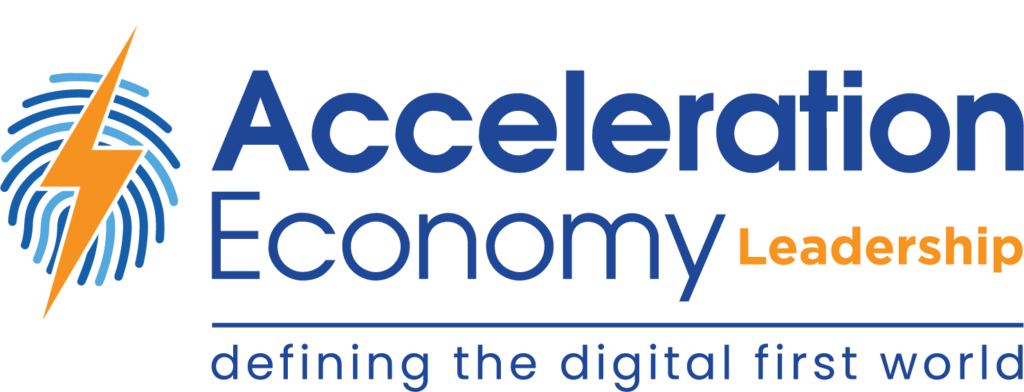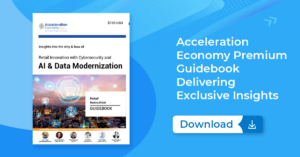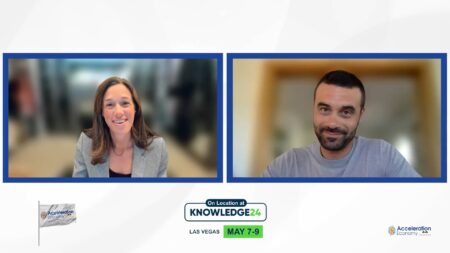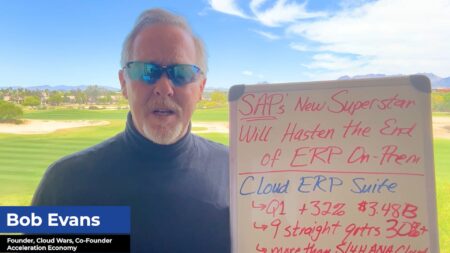In this special extended Leadership interview, Tony Uphoff speaks with One Medical Chief Strategy Officer Jenni Vargas. One Medical is a membership-based primary healthcare platform with some unique aspects, including a state-of-the-art app and a patient-centric approach rather than a traditional provider-centric approach. Its recent partnership with Amazon bodes well for the company’s future growth and accessibility, as you’ll learn in this interview.
To hear more data modernization, AI/hyperautomation, cybersecurity, and growth strategies from CIO practitioners, tune into Acceleration Economy’s Digital CIO Summit, which takes place April 4-6. Register for the free event here.
Highlights
00:53 — Tony introduces Jenni and asks her how she got into healthcare from a career point of view.
01:02 — Jenni says that after her mother’s death from lung cancer during her senior year of high school, she developed an interest in how the healthcare system worked. She majored in human biology at Stanford and decided to go into business instead of medicine or nursing. Most of her career since then has been spent working for health systems, doctor groups, and insurance companies. Eventually, she ended up working for the Stanford University healthcare system, which is where she met the people from One Medical and began her journey with that company.
02:22 — Tony asks Jenni to elaborate on how One Medical was founded, its original vision, and Stanford’s involvement in it.
02:40 — Jenni explains how company founder, physician, and “somewhat of a tech genius” Tom Lee’s original concept was to develop a more efficient, patient-centric primary care service. And in order to do that, he wanted to design the workflow, the offices, how the providers were compensated, and the electronic medical record. This was in the early days of electronic medical records. She met Lee in 2011 when Stanford Health Care invested in the company to open three clinics in the Bay Area. There was excitement around the patient-centric model, which one just doesn’t see in healthcare, says Jenni. The company kept growing and, as is the case with many founders, Tom handed the CEO role over to Amir Rubin in 2017 to help the company scale. Rubin, who had previously been the CEO of Stanford Health Care and an EVP at UnitedHealthcare, asked Jenni to join the company, which she did in 2018.
05:46 — Moving from a physician-centric model to a patient-centric model is more of a profound shift than many people realize, says Tony, who then asks Jenni if she could provide a couple of examples of how this plays out in doctor visits, scheduling, and so on.
06:24 — The patient-centric idea has been core to One Medical’s approach since its founding. “Tom really did that from the get-go,” says Jenni. “And one way he did that was to say ‘we are going to recruit and hire only providers who are willing to have their net promoter score measured every day.” One Medical prioritizes understanding how people feel about its approach, focusing on relationships and compensating its providers with a salary so that they can concentrate on patients. Unlike the “hamster wheel” model where doctors are compensated based on the number of patients they see and the revenue they generate, One Medical’s providers, who work four-and-a-half days per week, are not subjected to this kind of pressure.
07:49 — What’s more, One Medical’s providers work exclusively from a single exam room and do not have separate offices, which makes for a more seamless patient experience.
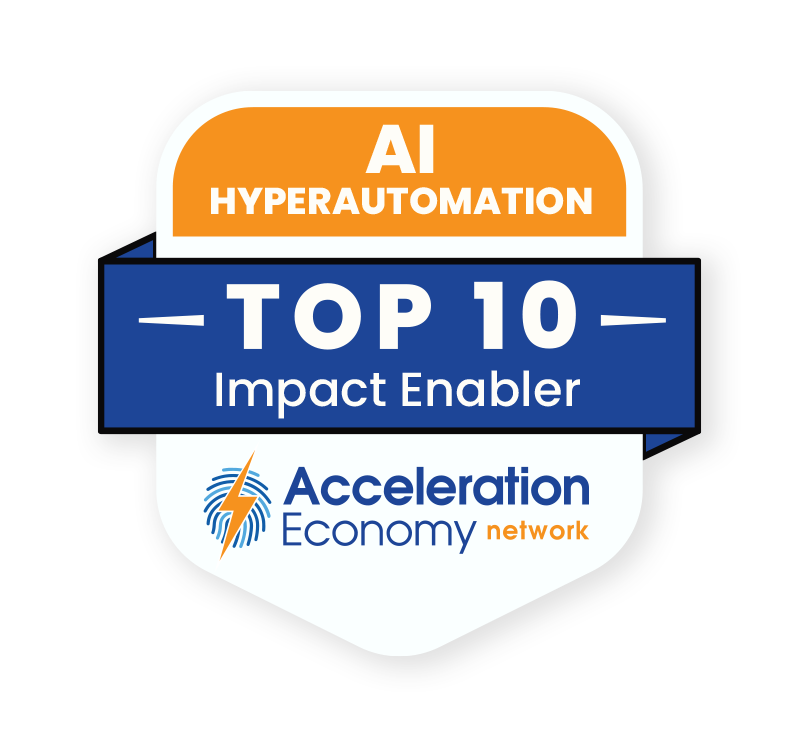
Which companies are the most important vendors in AI and hyperautomation? Check out the Acceleration Economy AI/Hyperautomation Top 10 Shortlist.
09:04 — One Medical is clearly a digital platform, says Tony. How has technology played a role in this? What role does an increasingly popular technology such as artificial intelligence (AI) play now and in the future for One Medical?
09:31 — Unlike most health systems, which have a patient portal that’s primarily designed for doctors and isn’t about scheduling or getting patient needs met, One Medical has an app that launches immediately and asks patients what they need help with, shows them available remote and in-person appointments, and lets them book them at any of their 200-plus locations across the country, which is handy if they are traveling. The primary thing the app does is scheduling and One Medical’s system is constantly looking at what’s open, what’s been canceled, and what can be released — all in the service of giving people same- or next-day access to appointments.
10:27 — The second thing patients use the app for is 24/7 video chat, which is what the $144 (on Amazon) annual membership fee covers. For that, patients essentially “push a button” and get a provider. Unlike other telehealth companies that feature third parties charging patients for each interaction and may not have their medical history, One Medical is first-party only and has all of a patient’s history.
11:35 — The “treat me now” feature on the app is more AI-based. It uses natural language processing (NLP) to understand medical issues that patients enter into the app and then route it in One Medical’s system to address the patient’s needs. The advantage of One Medical’s membership model is that all this is included in the annual fee, versus, say, Amazon Clinic’s similar offering that charges per interaction.
12:56 — Tony points out that $144 a year is considerably less than what he pays per year for a concierge doctor.
15:16 — Telehealth grew during the pandemic, but its usage has dipped a bit, says Tony. What does One Medical see as the best way to promote or encourage the telehealth channel today?
15:46 — “Post-pandemic, we’re back to the way people used our telehealth before the pandemic, which is when you’re not sure if you need to go to the emergency room or urgent care, typically in the middle of the night,” says Jenni. “It’s more about convenience rather than chronic conditions.” Telehealth is still important, she stresses, but patients should be allowed to use it when they want to, rather than being required to. One Medical offers both options.
17:01 — Tony shifts the discussion to demographics, noting that One Medical is popular with the Millennial generation but is now seeing growth in the 65-and-over segment, which has its own dedicated space in the app. What is One Medical’s approach to the Baby Boomer generation that is often mistakenly thought to have difficulty with technology?
17:57 — One Medical recently bought Iora, a company that focuses on healthcare for seniors. “One year into it, we’re exploring how to do seniors in different markets,” says Jenni, adding that there is no membership fee for seniors who are covered by Medicare Advantage plans. As for Millennials, “once you get used to it, you don’t want to go back” is the trend that Jenni has gathered from that generation’s usage of the platform.
19:22 — “I think as demographers, sometimes we get overly complicated about this stuff,” says Tony. “Given that we’ve lived in an app-based economy since roughly 2007, it would be hard-pressed to believe that somebody turning 65 today wasn’t pretty savvy [with apps].” To round out the conversation, Tony asks Jenni for her thoughts on One Medical’s partnership with Amazon, which features, among other things, prominent placement on Amazon’s site and a link-up with Amazon prescription fulfillment.
20:21 — Jenni says that during her whole career, she has always wanted to partner with companies that understand marketing and consumers, and that Amazon and One Medical share a focus on consumers. Amazon also excels at removing complexity, negotiating with big companies, and “collecting people,” while One Medical knows healthcare, is scaled across state lines, and has its own team of providers. “The combination of the two is just exciting,” she says.
22:31 — Tony notes that Amazon historically doesn’t acquire businesses that need fixing; it acquires businesses that need accelerating. He looks forward to catching up with Jenni a bit further down the road to see how things are going.
Want more tech insights for the top execs? Visit the Leadership channel:


